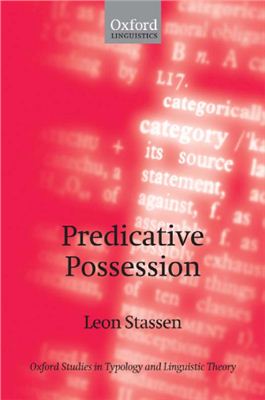Oxford University Press, 2009 - Всего страниц: 812
This is the first comprehensive treatment of the strategies employed in the world's languages to express predicative possession, as in "the boy has a bat". It presents the results of the author's fifteen-year research project on the subject. Predicative possession is the source of many grammaticalization paths - as in the English perfect tense formed from to have - and its typology is an important key to understanding the structural variety of the world's languages and how they change. Drawing on data from some 400 languages representing all the world's language families, most of which lack a close equivalent to the verb to have, Professor Stassen aims (a) to establish a typology of four basic types of predicative possession, (b) to discover and describe the processes by which standard constructions can be modified, and (c) to explore links between the typology of predicative possession and other typologies in order to reveal pattes of interdependence. He shows, for example, that the parameter of simultaneous sequencing - the way a language formally encodes a sequence like "John sang and Mary danced" - correlates with the way it encodes predicative possession. By means of this and other links the author sets up a single universal model in order to account for all morphosyntactic variation in predicative possession found in the languages of the world, including pattes of variation over time.
This is the first comprehensive treatment of the strategies employed in the world's languages to express predicative possession, as in "the boy has a bat". It presents the results of the author's fifteen-year research project on the subject. Predicative possession is the source of many grammaticalization paths - as in the English perfect tense formed from to have - and its typology is an important key to understanding the structural variety of the world's languages and how they change. Drawing on data from some 400 languages representing all the world's language families, most of which lack a close equivalent to the verb to have, Professor Stassen aims (a) to establish a typology of four basic types of predicative possession, (b) to discover and describe the processes by which standard constructions can be modified, and (c) to explore links between the typology of predicative possession and other typologies in order to reveal pattes of interdependence. He shows, for example, that the parameter of simultaneous sequencing - the way a language formally encodes a sequence like "John sang and Mary danced" - correlates with the way it encodes predicative possession. By means of this and other links the author sets up a single universal model in order to account for all morphosyntactic variation in predicative possession found in the languages of the world, including pattes of variation over time.

